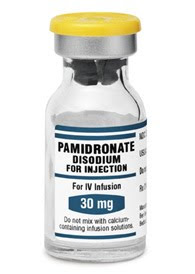
The successful use of pamidronate in an 11-year-old girl with complex regional pain syndrome: Response to treatment demonstrated by serial peripheral quantitative computerised tomographic scans
Authors: P. J. Simm, J. Briody, M. McQuade, C.F. Munns
ABSTRACT:
Complex regional pain syndrome (CRPS) is a disorder that can cause significant functional morbidity. While it usually presents in adulthood, it has also been reported in children. Multiple treatment modalities have been reported with mixed success. Bisphosphonate therapy has been shown to be effective in adult patients, but there are limited data in children. We report the successful use of intravenous pamidronate therapy in diminishing pain, improving function, and restoring bone mass in an 11-year-old girl with CRPS of her left lower limb following a tibial fracture. Previous treatment with intense physiotherapy and regional sympathetic blockade had not improved her symptoms. Pain improved within weeks of the first pamidronate infusion, with subsequent improvement in function. The benefit in pain reduction and function was sustained during the 2-year treatment regime. Improvement in bone mass and density was demonstrated by dual-energy X-ray absorptiometry (DXA) and peripheral quantitative computerised tomography (pQCT). pQCT scans showed marked improvement in bone size and geometry and muscle bulk on the affected side. No adverse affects were reported. We conclude that intravenous pamidronate was associated with reduced pain, a return of function, and recovery of bone and muscle parameters in a child with CRPS. Before definitive conclusions can be drawn, a randomised controlled trial similar to those undertaken in adults previously is required to fully validate this approach.
Published in Bone, Volume 46, Issue 4, Pages 885-888 (April 2010)
Authors: P. J. Simm, J. Briody, M. McQuade, C.F. Munns
ABSTRACT:
Complex regional pain syndrome (CRPS) is a disorder that can cause significant functional morbidity. While it usually presents in adulthood, it has also been reported in children. Multiple treatment modalities have been reported with mixed success. Bisphosphonate therapy has been shown to be effective in adult patients, but there are limited data in children. We report the successful use of intravenous pamidronate therapy in diminishing pain, improving function, and restoring bone mass in an 11-year-old girl with CRPS of her left lower limb following a tibial fracture. Previous treatment with intense physiotherapy and regional sympathetic blockade had not improved her symptoms. Pain improved within weeks of the first pamidronate infusion, with subsequent improvement in function. The benefit in pain reduction and function was sustained during the 2-year treatment regime. Improvement in bone mass and density was demonstrated by dual-energy X-ray absorptiometry (DXA) and peripheral quantitative computerised tomography (pQCT). pQCT scans showed marked improvement in bone size and geometry and muscle bulk on the affected side. No adverse affects were reported. We conclude that intravenous pamidronate was associated with reduced pain, a return of function, and recovery of bone and muscle parameters in a child with CRPS. Before definitive conclusions can be drawn, a randomised controlled trial similar to those undertaken in adults previously is required to fully validate this approach.
Published in Bone, Volume 46, Issue 4, Pages 885-888 (April 2010)
[Received 7 August 2009; received in revised form 9 November 2009; accepted 25 November 2009. published online 14 January 2010.]
No comments:
Post a Comment
The Haddock Corporation's newest dictate: Anonymous comments are no longer allowed. It is easy enough to register and just takes a moment. We look forward to hearing from you non-bots and non-spammers!